On 1 August 2012, following a period of heavy rain, a debris flow landslide occurred along the A83 Rest and Be Thankful pass (Argyll and Bute, Scotland).
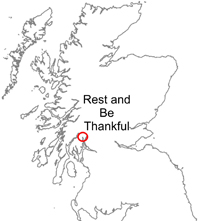
Rest and Be Thankful (A83) location map. BGS © UKRI.
It was reported that between 50 to 100 tonnes of material blocked the road that was subsequently closed in both directions resulting in a long diversion.
News reports
- Rest and Be Thankful on A83 closed overnight after landslip 1 August 2012, BBC News
- Clean-up starts after A83 Rest and Be Thankful landslip 2 August 2012, BBC News
- A83 landslide is ‘not safe’ for engineers to clear 2 August 2012, BBC News
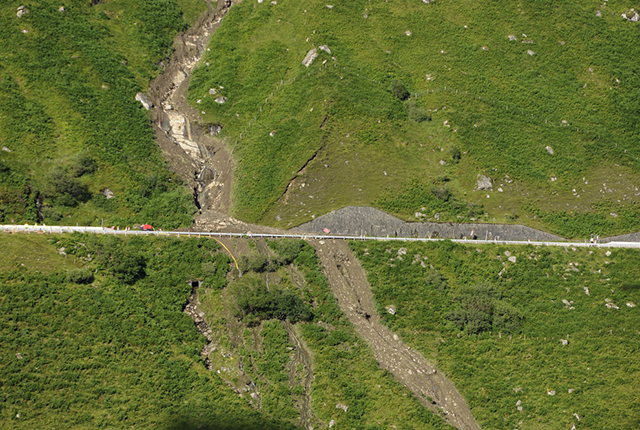
Rest and Be Thankful landslide, August 2012. BGS © UKRI.
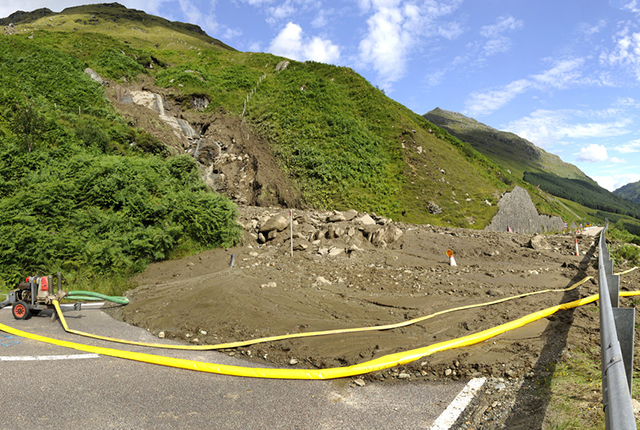
Landslide debris blocking the A83, August 2012. BGS © UKRI.
The BGS Landslide Response Team made a visit to the landslide on 2 August 2012 to record the failure. Information collected for the BGS National Landslide Database (ID 18688/1).
Road closures
This is the fifth time the road has been closed in the last five years.
- October 2007: a debris flow occurred after a period of heavy rainfall.
- September 2009: a debris flow followed the existing 2007 landslide track.
- November 2011: a translational landslide that degraded into a flow occurred to the south-east of the 2007/2009 landslide.
- February 2012: a small landslide (30–50 tonnes) occurred on 22 February 2012, setting off tiltmeter alarms. Although no debris from the landslide reached the road, the A83 was closed for two days as a precaution. BGS did not carry out a survey for this event.
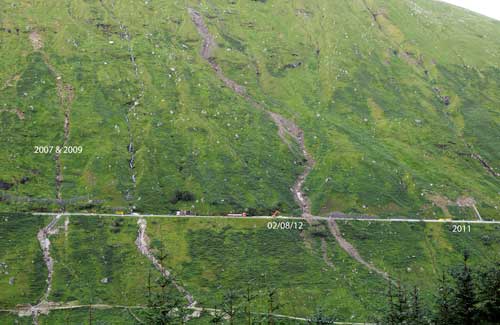
Rest and Be Thankful slope showing landslides from 2007, 2009, 2011 and 2012. BGS © UKRI.
Geology
The area in which these failures have occurred is steeply sloping ground underlain by rocks of the Beinn Bheula Schist Formation. These are composed of psammite and semi-pelite that are metamorphic in origin. These are composed largely of quartz, feldspar and mica minerals. These rocks are commonly intensely foliated and spectacularly folded; extensive quartz lenses and veins also occur.
The bedrock plays little part in the landslide activity on these slopes. The recent landslides here have largely been associated with slope deposits, including peat and topsoil as well as the underlying layers of colluvium, which comprises sandy to gravelly silts and clays, with varying amounts of cobbles and boulders. The colluvium deposits on this slope represent earlier phases of slope instability.
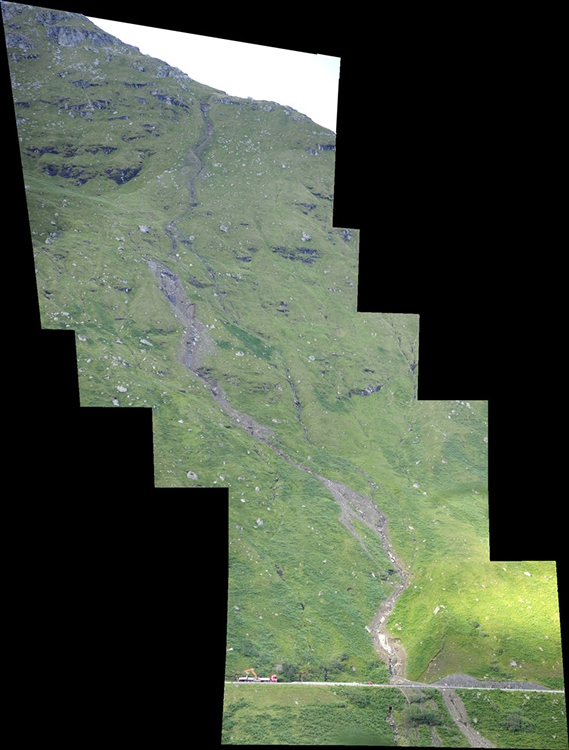
Composite photograph of the Rest and Be Thankful landslide, 2012. BGS © UKRI.
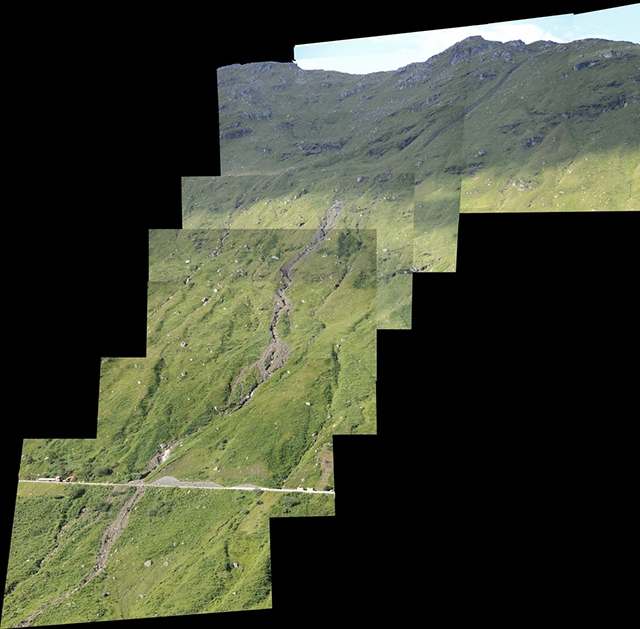
Composite photograph of the Rest and Be Thankful landslide, 2012. BGS © UKRI.
You may also be interested in
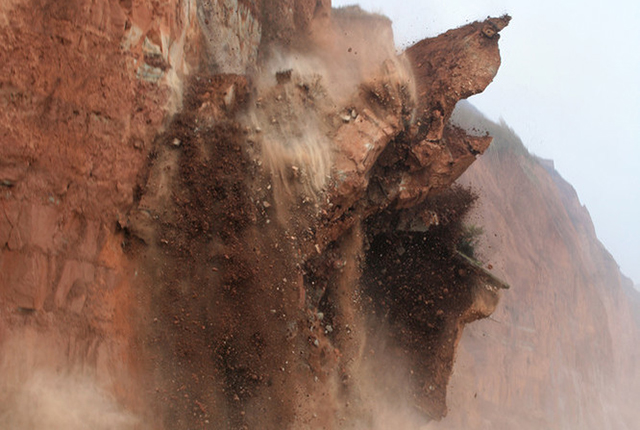
Landslide case studies
The landslides team at the BGS has studied numerous landslides. This work informs our geological maps, memoirs and sheet explanations and provides data for our National Landslide Database, which underpins much of our research.
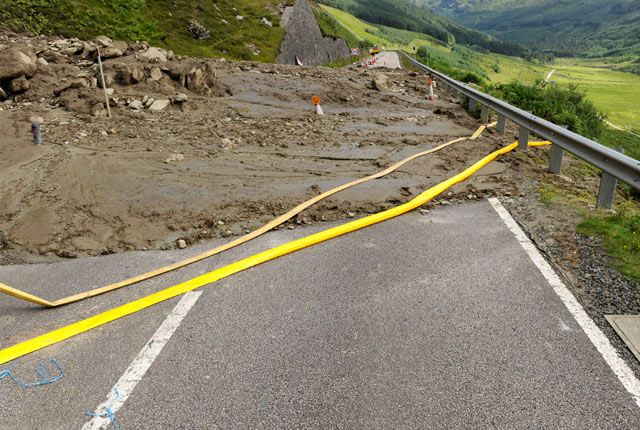
Understanding landslides
What is a landslide? Why do landslides happen? How to classify a landslide. Landslides in the UK and around the world.
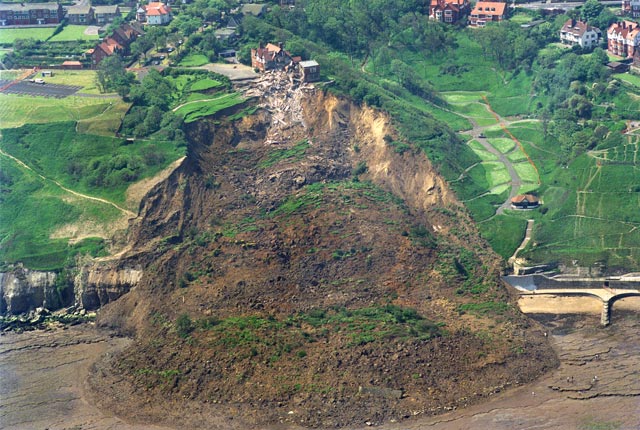
How to classify a landslide
Landslides are classified by their type of movement. The four main types of movement are falls, topples, slides and flows.
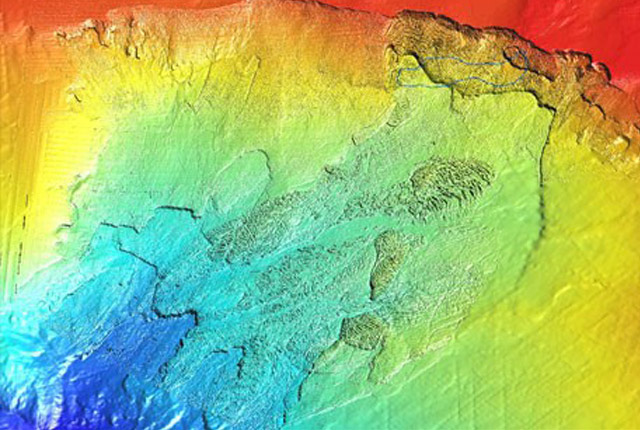
Landslides in the UK and around the world
Landslides in the UK, around the world and under the sea.



